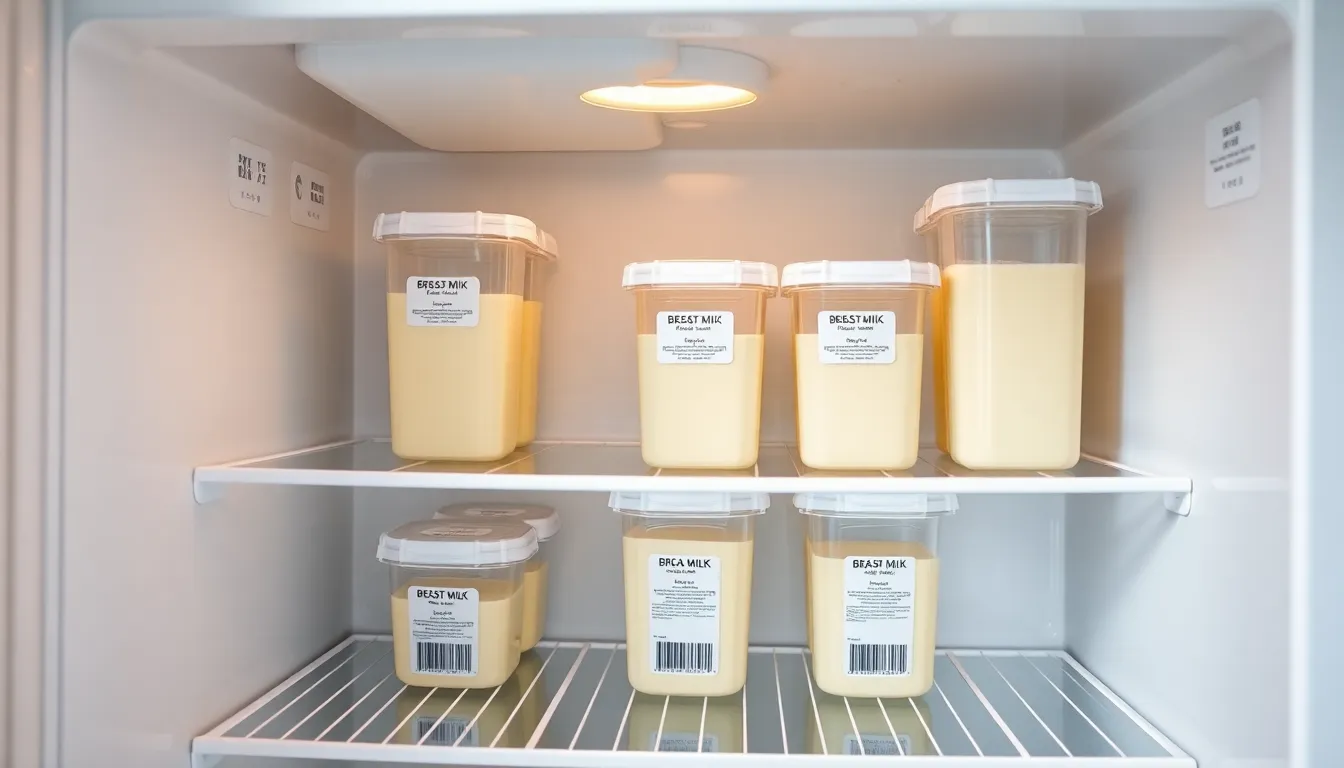Breast milk storage is a vital topic for new parents navigating the early stages of infant care. Understanding how to properly store breast milk not only ensures the safety and quality of the milk but also provides convenience for busy caregivers. With the right techniques, they can maintain the nutritional value and benefits of this precious resource.
Whether it’s for a quick outing or returning to work, knowing how to store breast milk can ease the transition. From choosing the right containers to understanding the best temperatures for storage, every detail matters. This guide will explore essential tips and best practices to help parents confidently manage their breast milk supply while keeping their little ones healthy and happy.
Table of Contents
ToggleImportance Of Breast Milk Storage
Proper breast milk storage safeguards its quality, ensures infant health, and provides convenience for caregivers. Understanding effective storage techniques maximizes nutritional value and minimizes waste.
Nutritional Value
Maintaining nutritional integrity is a priority. Freshly expressed breast milk contains essential antibodies, enzymes, and nutrients that support an infant’s development. To preserve these qualities, storage conditions require attention to temperature and duration.
Safety
Safe storage practices prevent bacterial growth. When breast milk is correctly frozen or refrigerated, the risk of contamination decreases significantly. Parents must adhere to recommended timeframes for both refrigeration and freezing to ensure milk safety.
Convenience
Convenience becomes critical for parents managing busy schedules. Proper storage allows for flexible feeding times and reduces stress during outings. A well-organized milk supply offers caregivers peace of mind, knowing nutritious options are readily available.
Best Practices
Follow these best practices to optimize breast milk storage:
- Use clean, sterilized containers designed for breast milk.
- Label containers with the date of expression.
- Store milk in small batches to facilitate thawing and reduce waste.
- Keep refrigerated milk at a temperature of 32°F to 39°F (0°C to 4°C) for up to 4 days.
- Freeze milk at 0°F (-18°C) or lower for up to 6 months, ideally within 3 months for best quality.
By prioritizing breast milk storage, parents enhance both safety and nutrition, contributing to a healthier start for their infants.
Methods Of Breast Milk Storage

Understanding various methods of breast milk storage ensures safety and retains nutritional quality. Here are the primary techniques for refrigerating and freezing breast milk.
Refrigeration
Refrigeration maintains the freshness of breast milk for short-term storage. Breast milk can safely remain in the refrigerator for up to 4 days at 39°F (4°C) or lower. To optimize storage, consider these guidelines:
- Use clean, sterilized containers designed for breast milk.
- Label each container with the date and time of expression.
- Store milk at the back of the refrigerator, away from the door, to ensure consistent temperature.
- Keep milk separate from raw foods to avoid contamination.
Freezing
- Use BPA-free plastic bags or rigid containers labeled for freezing.
- Leave extra space in the containers to accommodate expansion during freezing.
- Thaw milk by placing it in the refrigerator or submerging it in warm water, avoiding microwave use which can create hot spots.
- Refreeze thawed milk is not recommended; use it within 24 hours after thawing.
Best Practices For Breast Milk Storage
Following best practices for breast milk storage ensures safety and preserves nutritional quality. Proper techniques facilitate convenient access and usage for caregivers.
Container Selection
Choose containers specifically designed for breast milk storage, such as BPA-free bottles or bags. Opt for small batches, typically 2 to 4 ounces, which reduce waste and make thawing easier. Ensure all containers are clean and sterilized before use to eliminate contaminants. Use hard plastic or glass containers that can withstand freezing without cracking. Avoid using standard plastic bags as they may not provide adequate protection against freezer burn.
Labeling And Dating
Label each container with the date and time of expression to keep track of freshness. Utilize waterproof labels or permanent markers for durability. Always follow the “first in, first out” principle, using older milk first to ensure optimal quality. This organization helps prevent accidents and simplifies the feeding process for caregivers.
Safety Considerations In Breast Milk Storage
Proper safety measures in breast milk storage ensure that nutrients remain intact while minimizing the risk of contamination. Adhering to guidelines protects infants’ health and maximizes the benefits of expressed milk.
Thawing Procedures
Thawing breast milk requires careful methods to maintain safety and quality. Parents can place frozen milk in the refrigerator overnight for slow thawing. Alternatively, they can submerge the milk container in warm water for quicker thawing. Microwaving breast milk is not recommended, as it can create hot spots and damage essential nutrients. Once thawed, use the milk within 24 hours, and do not refreeze previously frozen milk.
Duration Guidelines
Understanding proper storage duration is crucial for maintaining milk quality. Refrigerated breast milk lasts for up to 4 days at 39°F (4°C) or lower. For freezing, milk retains its quality for up to six months at 0°F (-18°C) or lower, with a maximum storage recommendation of up to 12 months for future use. Always record the expression date on containers to follow the “first in, first out” principle. Regularly check stored milk, discarding any that appears separated, discolored, or has an off-smell.
Proper breast milk storage is essential for ensuring the health and safety of infants. By following best practices and understanding storage techniques, parents can preserve the nutritional integrity of breast milk while making life easier during busy days.
Utilizing clean containers and adhering to recommended refrigeration and freezing guidelines not only protects against bacterial growth but also maximizes the benefits of expressed milk. With careful management, parents can confidently provide their little ones with the best nutrition possible, ensuring a healthy start in life. Prioritizing these storage practices ultimately supports both the caregiver and the infant in their daily routines.






